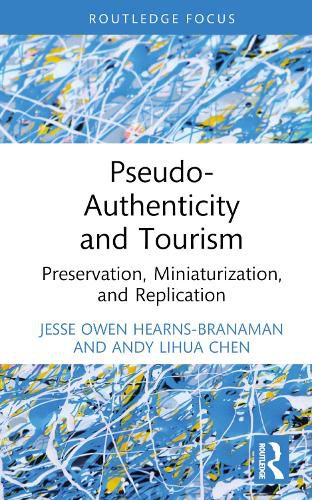Readings Newsletter
Become a Readings Member to make your shopping experience even easier.
Sign in or sign up for free!
You’re not far away from qualifying for FREE standard shipping within Australia
You’ve qualified for FREE standard shipping within Australia
The cart is loading…






This book explores the concept of authenticity in tourism through the analysis of six tourist sites in Guangdong Province and Macau, China.
Through a review of tourism literature, it develops the concept of pseudo-authenticity in which tourist sites and cultural products function to give signs of authenticity for tourists. This is achieved through the influence of media, authentic fakery, and facadism. Readers will gain greater insight into tourist sites in China that operate through cultural preservation, the miniaturization of cultural assets, and the replication of foreign signs through reproductions of foreign cities. The authors outline the tourist sites, an aesthetic analysis, on-site interviews with tourists, and an examination of online reviews of the sites.
This is a useful work for scholars and students of tourism studies in China and around the world, especially those concerned with issues of authenticity and the effects of commodification on cultural assets.
$9.00 standard shipping within Australia
FREE standard shipping within Australia for orders over $100.00
Express & International shipping calculated at checkout
This book explores the concept of authenticity in tourism through the analysis of six tourist sites in Guangdong Province and Macau, China.
Through a review of tourism literature, it develops the concept of pseudo-authenticity in which tourist sites and cultural products function to give signs of authenticity for tourists. This is achieved through the influence of media, authentic fakery, and facadism. Readers will gain greater insight into tourist sites in China that operate through cultural preservation, the miniaturization of cultural assets, and the replication of foreign signs through reproductions of foreign cities. The authors outline the tourist sites, an aesthetic analysis, on-site interviews with tourists, and an examination of online reviews of the sites.
This is a useful work for scholars and students of tourism studies in China and around the world, especially those concerned with issues of authenticity and the effects of commodification on cultural assets.